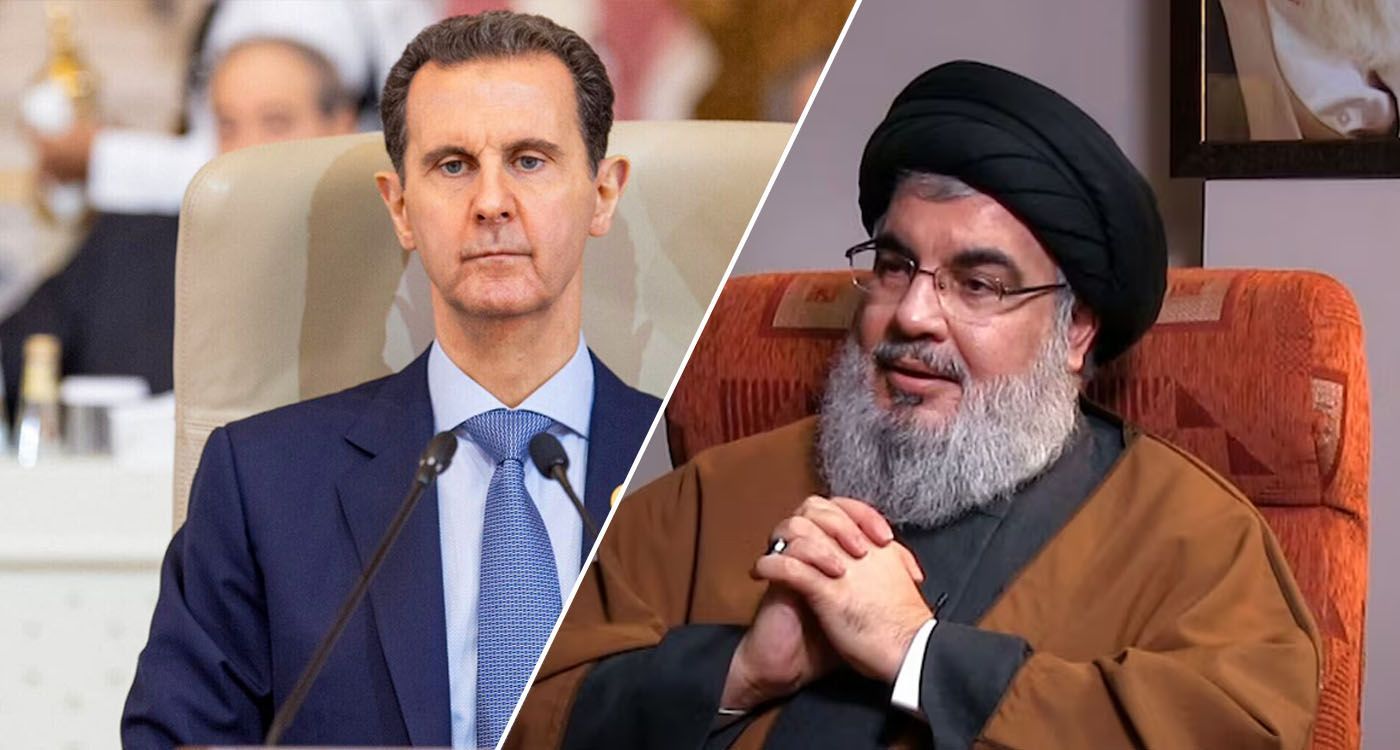
"Thank you to Assad's Syria, thank you to Hafez al-Assad's Syria, thank you to Bashar al-Assad's Syria." — Hassan Nasrallah, March 8, 2005
The collapse of Bashar al-Assad's regime delivers a major blow to the Iranian axis in the region, with Hezbollah bearing the brunt of the impact. Assad's departure signals the disintegration of the once-aspired "Shia Crescent," which aimed to connect Tehran to Beirut via Baghdad and Damascus.
As a new Middle East takes shape following the events of October 7, 2023, Lebanon is inevitably drawn into these seismic shifts — with Hezbollah finding itself at the heart of the fallout.
Hezbollah: The main loser in the fall of Assad's regime
Hezbollah took over from the Syrian regime in 2005, holding Lebanon hostage to its own hegemonic ambitions — and those of Iran. It sent thousands of fighters to their deaths in Syria under the pretext of "preemptively protecting Lebanon from takfiris" — the same Islamists who had killed Lebanese soldiers in 2014 but were later allowed to leave in air-conditioned buses in August 2017. This deal was personally negotiated by then-Secretary General Hassan Nasrallah with the Syrian president.
Hezbollah intervened to support the Assad regime, at the request of the mullahs but also to maintain its vital corridor to Tehran. This route was crucial for the militia, allowing it to receive arms, foreign fighters, and funding to pay its members and allies. For several years, Hezbollah and other Iran-backed militias have entrenched themselves in Syrian territory, setting up, among other things, weapons and drug factories, as well as training camps. Since 2019, following the implementation of the Caesar Act (Caesar Syria Civilian Protection Act), Hezbollah has facilitated the export of billions of dollars’ worth of subsidized Lebanese state goods, significantly contributing to Lebanon's financial collapse. Through its obstructionist tactics, Hezbollah has also pressured the Lebanese state in recent years to resume relations with the Syrian regime, using the sensitive issue of Syrian refugees as a pretext.
In short, Hezbollah had a vested interest in the survival of the Assad regime. The "Moumanaa" axis (the Iran-backed obstructionist axis) has now lost a key ally, not because Assad was a major regional power, but because his weakness allowed Iran's influence to reach the Mediterranean. On the ground, the rebel capture of the strategic city of al-Qusayr on Saturday evening — just 10 kilometers from Lebanon’s northern border and known as Hezbollah's "backyard" — while hundreds of Hezbollah fighters withdrew to Hermel, strikes a significant blow to Hezbollah's logistical operations. With ongoing Israeli airstrikes targeting crossing points along the northern and eastern borders, it is evident that the link with Tehran has been completely severed.
As the year ends, following months of intense conflict with Israel, the Iran-backed militia faces growing isolation. Israeli strikes have severely weakened its military capabilities, decimated its leadership, and left its controlled territories in ruins. Meanwhile, discontent is rising among residents in southern Lebanon and the Beqaa Valley.
The loss of its logistical corridor, coupled with a halt in revenue streams — from both Iranian cash inflows and profits from Captagon sales — is likely to further erode Hezbollah's influence within Lebanon, particularly among the Shiite community.
A likely political setback
Hezbollah’s military setback is likely to impact its political power, as well as that of its allies who relied on its hegemony. The coalition of pro-Syrian and Iran-backed forces, known as the March 8 Alliance, could only survive politically through the backing of the armed militia, which sought to portray itself as a broad, diverse group. The loss of Talal Arslan and Wi’am Wahab in the 2018 parliamentary elections, attributed to Hezbollah’s support for the Free Patriotic Movement list, or the 2022 losses in Western Beqaa of Elie Ferzli, a former Deputy Speaker of Parliament and staunch Assad ally, and Assaad Hardane of the Syrian Social Nationalist Party in southern Lebanon — Hezbollah’s stronghold — are just a few examples of the dependency of these figures and factions.
The parliamentary session for the presidential election, scheduled for January 9, 2025, will provide insight into how the obstructionist axis positions itself in light of the recent upheavals. Furthermore, the candidacy of former minister and leader of the Marada Movement, Sleiman Frangieh, has likely lost some of its momentum. He had repeatedly stated that his personal relationship with President Assad would help resolve key issues, such as the demarcation of the Lebanese-Syrian border and the Syrian refugee crisis. As recently as May, he claimed that the situation "required state-to-state discussions with Syria."
It remains to be seen how the recent upheavals in Lebanon and the wider region will impact Speaker of Parliament, Nabih Berri. His political survival since the end of the Lebanese Civil War in 1990, has been closely tied to the intervention of Hafez al-Assad and a deal between Tehran and Damascus — the respective sponsors of Hezbollah and the Amal Movement. Over the years, Berri has consistently played a shrewd political game, keeping multiple options at his disposal.




Comments